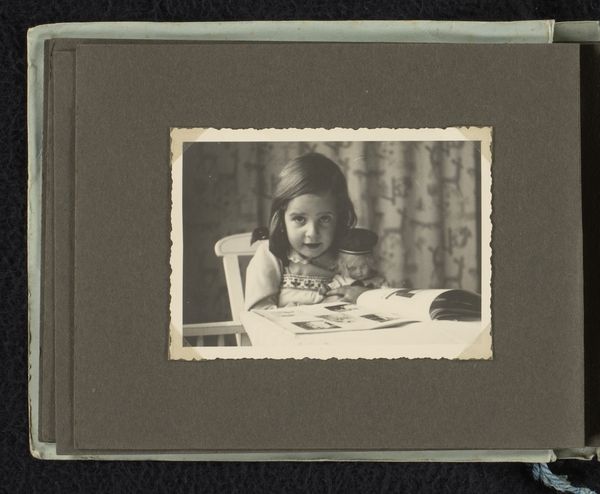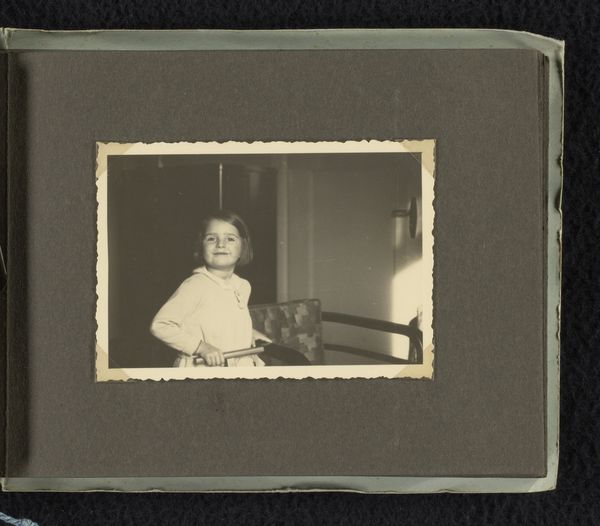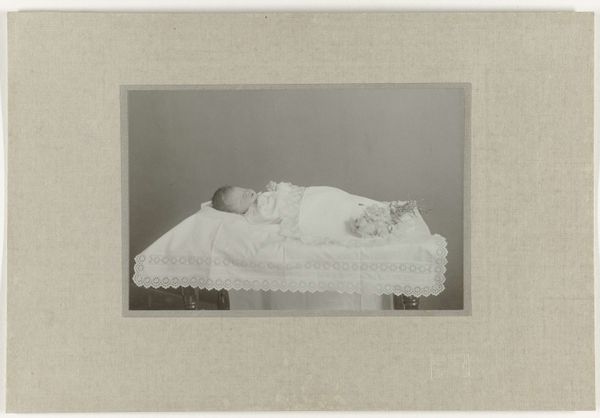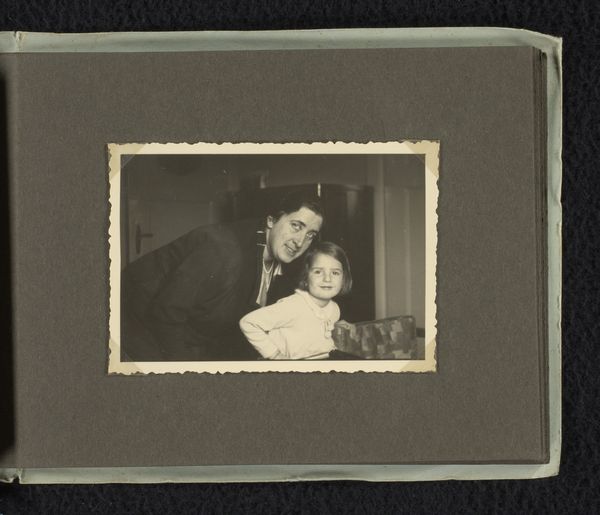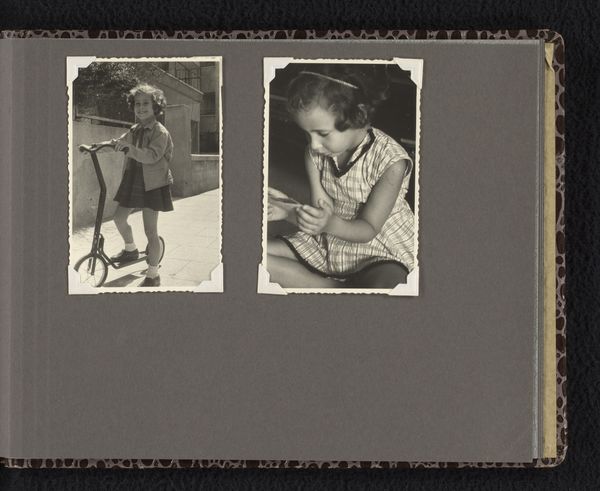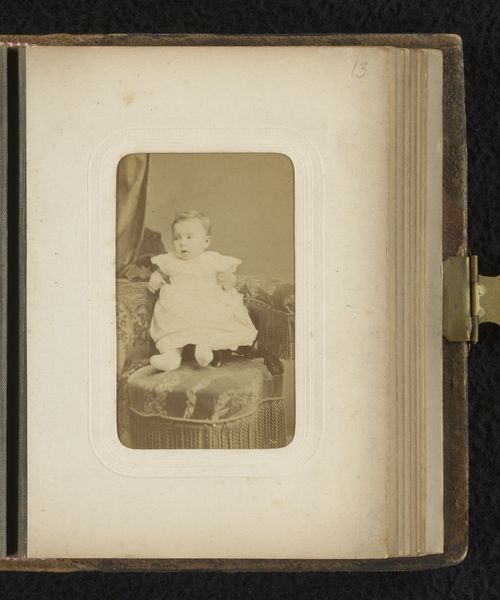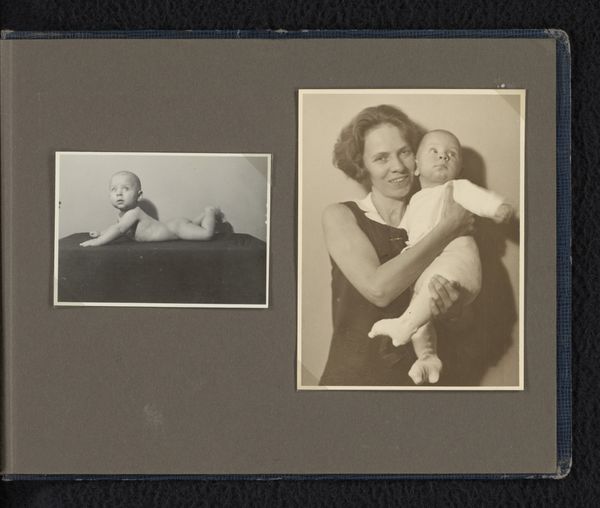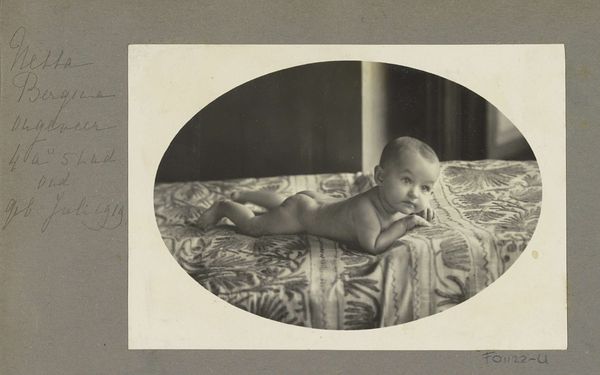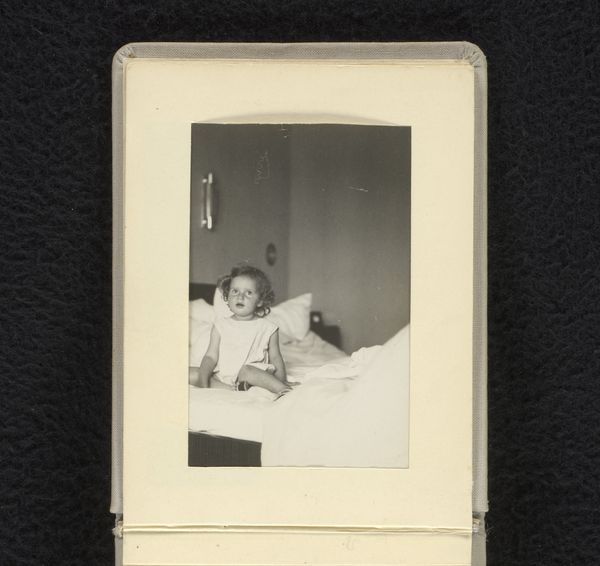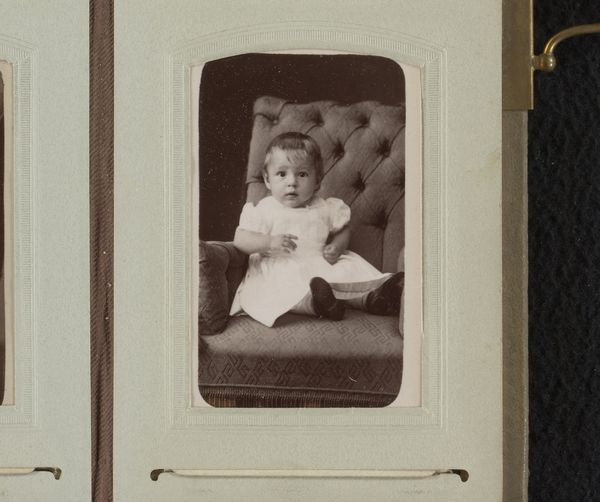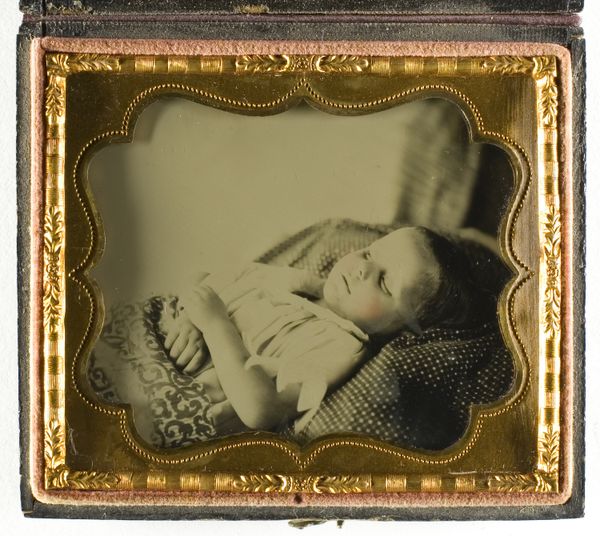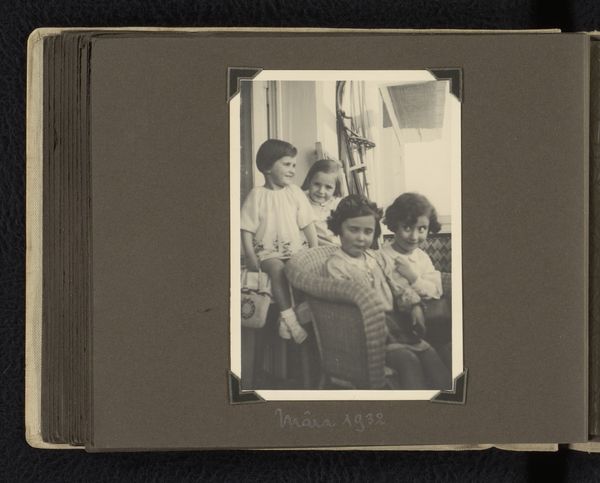
Isabel Wachenheimer leunt met haar hoofd op een tafel in de woning van de familie Wachenheimer c. 1932 - 1937
0:00
0:00
photography, gelatin-silver-print
#
portrait
#
photography
#
gelatin-silver-print
#
modernism
Dimensions: height 75 mm, width 90 mm, height 120 mm, width 170 mm
Copyright: Rijks Museum: Open Domain
Curator: Here we see “Isabel Wachenheimer leunt met haar hoofd op een tafel in de woning van de familie Wachenheimer,” a gelatin-silver print created sometime between 1932 and 1937. It's part of a family album, a fragment rescued from a lost world. Editor: It has a melancholic quality. The low contrast and somewhat blurry focus lend a feeling of gentle unease. The girl looks pensive, perhaps even burdened, and the table seems hard. Curator: Considering the Wachenheimer family's fate during the Holocaust, this image is rife with socio-political implications. This is Isabel, pre-war, unaware of the forces gathering that would lead to her displacement and likely, her murder. It's a potent reminder of the personal toll of historical events, captured here in silver salts. Editor: That makes the materiality resonate differently. Gelatin-silver, a fairly commonplace medium, almost a banality... but used to document a specific moment of domesticity on the cusp of unimaginable violence. You can almost imagine the maker's hands, the darkroom smells, the deliberate act of fixing a moment. Curator: The domestic context is crucial. A table, a home, the mundane backdrop of a child’s life contrasted against what was to come. The family unit as both a source of love and vulnerability within the impending genocide. The image begs us to look at the specific experiences erased by grand narratives. How the Nazis' agenda and their production of hate ultimately manufactured an apocalyptic cultural moment in which every domestic space became a theater for violence and discrimination. Editor: And that grainy texture itself; a physical artifact speaking to the ephemeral nature of memory. These are delicate, chemical compounds used for cultural genocide—both in how it attempted to completely decimate Jewish lives and cultures. It forces us to reconsider not just "what" we see, but "how" we see and how we participate in memorialization. Curator: The beauty and simplicity is ultimately heartbreaking, and calls to reflect on what was stolen. Editor: Absolutely. The fragility of the gelatin silver seems almost to embody the fragile nature of life itself, of communities destroyed. A powerful little document.
Comments
No comments
Be the first to comment and join the conversation on the ultimate creative platform.
